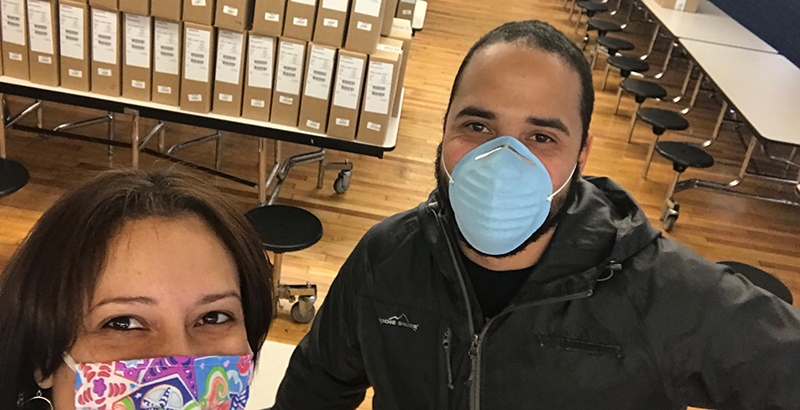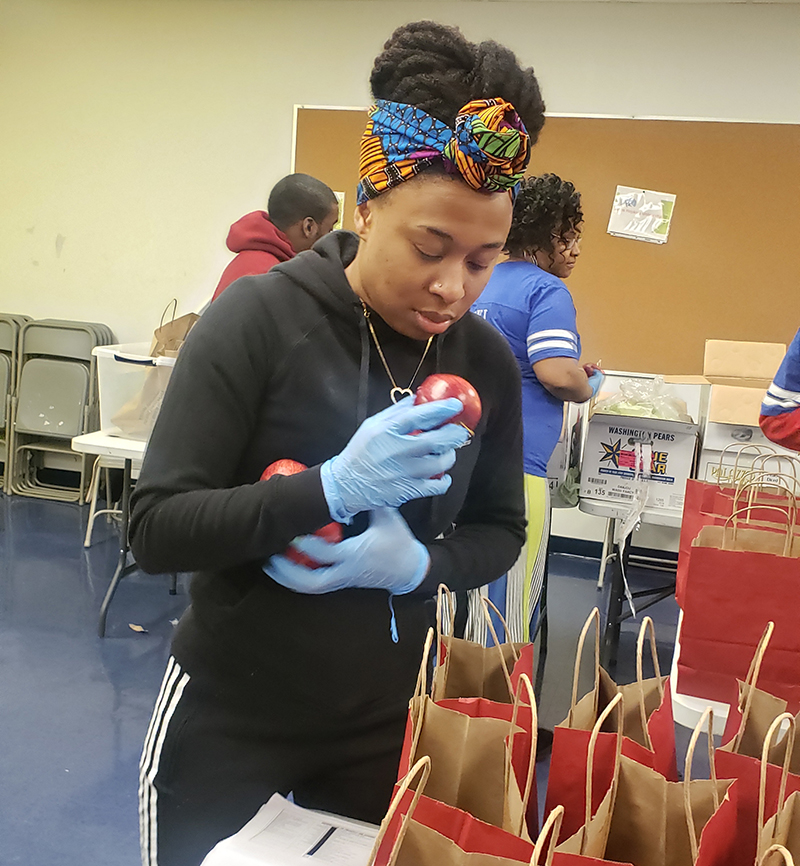Pandemic Planning: We Know the Inequities Black and Brown Students Face, and This Knowledge Requires Action

Educators must boldly address educational inequities now more than ever. COVID-19 is infecting and affecting communities of color at disproportionately high rates and exacerbating existing barriers to black and brown kids achieving high-quality education. If we piecemeal together an approach, we may leave many students behind for years.
The pandemic thrust our nation’s long-standing economic and educational racial inequities onto center stage. In our majority black and brown South Ward neighborhood in Newark, New Jersey, many kids’ caregivers are essential employees unable to work from home, access paid sick leave or flex their schedules to homeschool their children. Every day, they risk contracting the virus or carrying it and unknowingly bringing it home to their children.
Inconsistent access to affordable health care and well-documented racial bias in medical treatment undermine families’ attempt at wellness. We’ve heard from single parents that a COVID-19 diagnosis would leave their children alone during quarantine and leave them without a paycheck. Multiple children of different grade levels must share the home computer, if one is available. And many families have shared that they don’t even have home computers or broadband access, further preventing their children from being able to participate in the new normal of distance learning.
The story of the South Ward is the story of America today; across the nation, communities of color are battling resource gaps and structural hurdles in the way of keeping their families safe and healthy and keeping their children on the right learning track. At the same time, teachers are working to create robust virtual classrooms while doing what they can to battle educational inequity from behind their computer screens.
We’re proud of the educators who factor in these realities when determining homework assignments, deadlines and their reliance on remote learning platforms. Let’s go further and consider the entire family to best support the child. Here are some ideas:
- Offer instructional materials at frequently visited locations: We post lessons plans online and distribute printed copies at our food distribution events to make it easy for those needing printouts to get them. The safety and well-being of our families comes first, and we do not want them to take more trips than necessary.
- Provide counseling: Counseling is an important in-school service, so to maintain that support, we launched a one-on-one counseling hotline for those experiencing anxiety, grief and stress during these times. Our community can speak with a social worker, school administrator or teacher whom they already know and trust. Like Cañon City Schools in Cañon City, Colorado, we are addressing social and emotional health by providing age-appropriate resources on our website for students and parents.

Angela Thomas, principal of Achieve Clinton Hill Charter School, prepares grab-and-go meals for families at her school. (BRICK Education Network)
- Close gaps in support: We created a touchless food pantry by having volunteers pack and deliver food and cleaning products not provided by the Supplemental Nutrition Assistance Program (SNAP) to families’ doorsteps. There are a whole host of gaps that families face that impact their children’s wellness. Through partnerships, we can be the bridge at this moment. A teacher in Charlotte, North Carolina, created a community-powered food pantry in her school in just four days to feed students and families.
- Pay it forward: Since SNAP benefits are distributed on the first of each month and typically run out by the middle of the month, the BRICK Education Network is also offering cash assistance to several families to help them address immediate needs such as bill payments, prescriptions or transportation costs.
- Get creative about broadband access: Even before the pandemic, inequitable access to high-speed internet contributed to the “homework gap,” and now states are scrambling to address the digital divide given that most instruction is now online. In Arkansas, where many households lack internet service, the local PBS affiliate is providing daily television programming tied to the state’s distance learning curriculum. Meanwhile, cable TV companies in New Jersey have agreed to offer free Wi-Fi hotspots and to not terminate service to any customers due to an inability to pay. Another solution that has surfaced in different places is to park Wi-Fi-enabled school buses in communities where underserved students live. Still too many children are shut off from broadband access due to spotty coverage, past due bills and slow application processing times. Fortunately, these challenges are surmountable.
- Supply devices to families: Broadband is part of the challenge; children also need home computers, and school districts are struggling to keep up with the demand. The BRICK Education Network provided 1,089 Google Chromebooks to all of our students who needed one. We need, however, a nationwide solution to scale hardware access — perhaps through public-private partnerships. Home computers are essential to learning, especially during these unprecedented times.
Knowing the structural and systemic barriers our families face, let’s begin with these ideas and go further. In this health crisis, we must boldly imagine ways to make these resources lasting for all children if we’re to truly transform education.
Nichelle Holder is the chief program officer for the BRICK Education Network based in Newark, New Jersey. The charter management organization aligns an excellent education with the necessary family supports to make sure every child can unlock their limitless potential. It takes a two-generation approach to student success — supporting children and their caregivers together.
Get stories like these delivered straight to your inbox. Sign up for The 74 Newsletter

;)